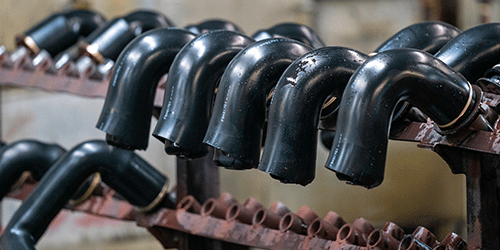Plastic may have a single moniker for common usage, but in truth, there are thousands of different types of plastics, each made up of slightly different components, and used for thousands of different applications.
The plastics that we use in daily life range from kitchen plastics that keep air from our food (which allows it to stay fresh longer) to components that can improve a car’s gas mileage. We are constantly using a variety of plastics, even when we don’t realize it.
While it’s true that the number of different plastics probably ranges in the thousands, two of the most common categories are thermoplastics and thermosets.
Thermoplastics are created in a two-step process. First, small pellets are formed and then those pellets are heated to a melting point, and then formed into any number of common objects we use every day. Some of the plastics in this category include polyethylene (used for things like plastic bags), polypropylene (thermal underwear), polyvinyl chloride (PVC pipe), polystyrene (packing peanuts), nylon (rope), and polycarbonate (construction materials).
Thermosets are made in a non-reversible, single-step process using heat. Types of thermoset plastics include vulcanized synthetic rubber (tires), acrylics (paint), polyurethanes (insulation), melamine (dishes), silicone (aircraft parts), and epoxies (glue).
Plastic fibers have been spun into filaments used to make ropes, cables, fabric and even body armor. These plastics are very strong, but also flexible, and stable when exposed to heat.
But our specialty is another type of plastic: engineering plastics. Highly durable, these plastics are designed and engineered for specialty applications such as resisting impact.
You can contact us anytime to request a quote for your manufacturing project. We’ll get back to you within 48 hours.
